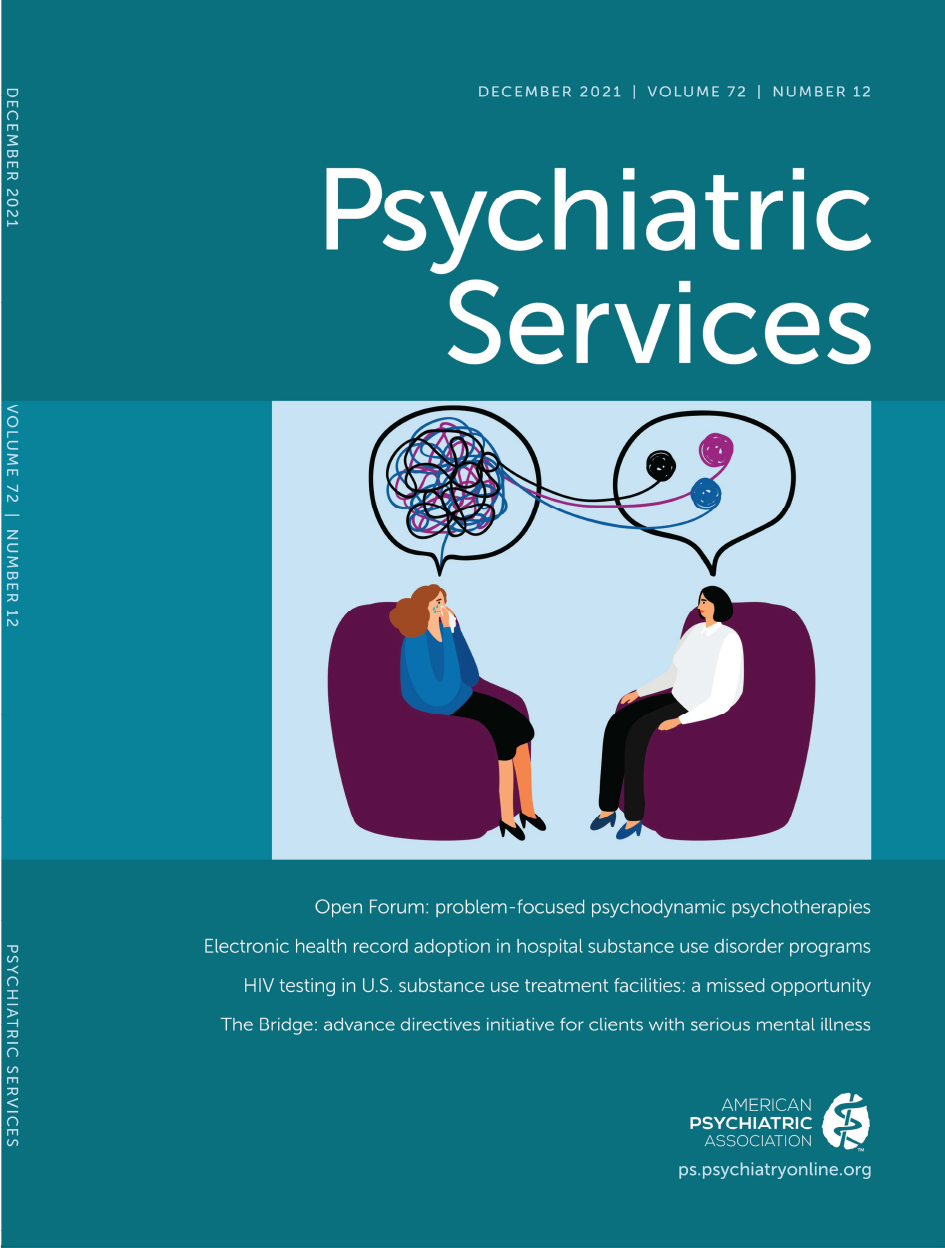Use of Electronic Health Information Technology in a National Sample of Hospitals That Provide Specialty Substance Use Care
Abstract
Objective:
Most U.S. acute care hospitals have adopted basic electronic health record (EHR) functionality and health information exchange (HIE) (84% and 88%, respectively, in 2017). This study examined whether rates of EHR and HIE adoption by hospital-based substance use disorder programs are lower than rates by acute care hospitals.
Methods:
Data from the 2017 National Survey on Substance Abuse Treatment Services were analyzed to examine adoption of basic EHR functionality (i.e., assessment, progress monitoring, discharge, labs, and prescription dispensing) and use of HIE by hospital-based programs. Analyses used weighted multivariable models of EHR and HIE outcomes, adjusted for nonresponse.
Results:
Of 894 hospital-based substance use disorder programs with EHR information, two-thirds (N=606, 68%) reported use of basic EHR functionality. Psychiatric hospitals were less likely than acute care hospitals to have adopted EHR (odds ratio [OR]=0.49, 95% confidence interval [CI]=0.35–0.71). Compared with nonprofit hospitals, for-profit (OR=0.23, 95% CI=0.16–0.35) and government-owned (OR=0.52, 95% CI=0.33–0.83) hospitals were less likely to use basic EHR functionality. Hospital-based programs providing medications for alcohol or opioid use disorders were more likely than those not providing such medications to use basic EHR (OR=1.95, 95% CI=1.31–2.90). Of 839 hospitals with information on HIE use, 598 (71%) reported using electronic HIE. Adoption of basic EHR functionality was the strongest predictor of HIE use (OR=4.73, 95% CI=3.29–6.79).
Conclusions:
Hospital-based substance use disorder programs trail behind U.S. acute care hospitals in adoption of basic EHR and electronic HIE. Findings raise concerns about missed opportunities to improve hospital-based substance use disorder care quality and performance measurement.



